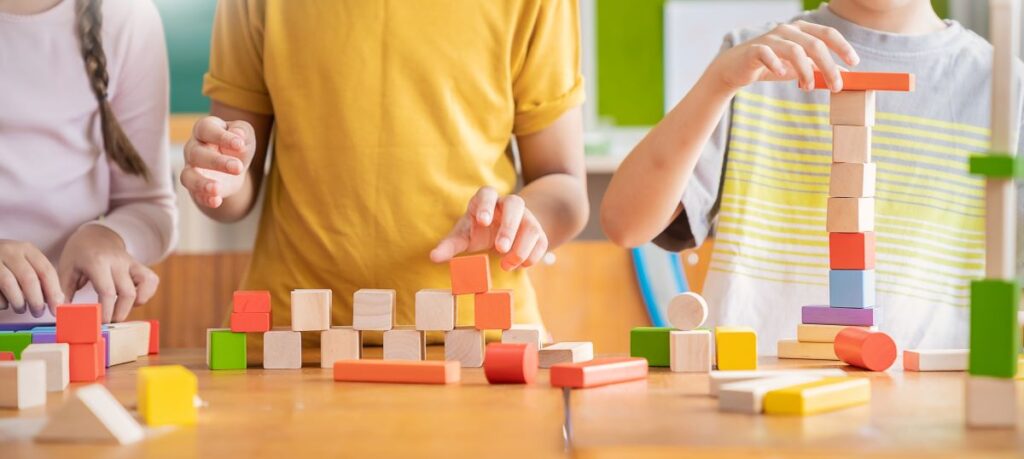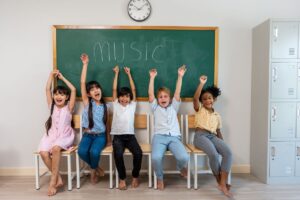Kinesthetic learning, often synonymous with experiential or tactile learning, is a learning style in which students carry out physical activities rather than listening to a teacher’s lecture or watching demonstrations.
This approach can enhance engagement, retention, and understanding, fostering a more dynamic and interactive classroom environment.
Understanding Kinesthetic Learning
Kinesthetic learning involves hands-on activities that require students to engage physically with the material.
This learning style is particularly beneficial for students who struggle with traditional learning methods.
It encourages active participation, which can lead to improved memory and comprehension.
The Importance of Experiential Learning
Experiential learning is not just about doing but also about reflecting on what has been done.
It enables learners to connect theory with practice, thereby enhancing their understanding of complex concepts. This approach is instrumental in developing critical thinking and problem-solving skills.
Tactile Learning: Engaging the Senses
Tactile learning emphasizes the use of touch to comprehend and retain information.
By involving multiple senses in the learning process, tactile learning can make abstract concepts more tangible and accessible.
This sensory involvement is crucial in solidifying new knowledge and skills.
Effective Kinesthetic Activities for Classrooms
Here are some innovative activities to incorporate kinesthetic learning into your classroom:
Role-playing and Simulations
Role-playing and simulations provide a platform for students to apply theoretical knowledge in a controlled, yet dynamic environment.
By adopting roles and engaging in scenarios, students can explore different perspectives and practice decision-making in real-time.
Implementation Tip: Use historical events, scientific processes, or literary themes as scenarios for role-playing activities. Encourage students to research and prepare for their roles to enhance their learning experience.
Interactive Models and Manipulatives
Interactive models and manipulatives such as building blocks, puzzles, and 3D models are excellent tools for kinesthetic learning.
These resources allow students to physically manipulate objects, which aids in understanding spatial relationships and abstract concepts.
Implementation Tip: Introduce manipulatives in subjects like mathematics for geometric concepts, or biology for understanding anatomical structures. Provide guided activities to ensure that students remain focused on learning objectives.
Learning Stations and Rotations
Learning stations involve setting up different activity stations around the classroom, each with a distinct task or topic.
Students rotate through these stations, engaging with each activity in a hands-on manner. This approach caters to diverse learning styles and keeps students actively involved.
Implementation Tip: Design learning stations with varied activities such as experiments, problem-solving tasks, or creative projects. Ensure that each station has clear instructions and objectives to maximize learning outcomes.
Field Trips and Outdoor Learning
Field trips and outdoor learning experiences extend kinesthetic learning beyond the classroom walls.
These activities provide real-world context and allow students to explore subjects in a natural setting, fostering a deeper connection with the material.
Implementation Tip: Plan field trips that align with the curriculum and involve preparatory and follow-up activities. Encourage students to document their observations and reflections to reinforce learning.
Art and Music Integration
Incorporating art and music into the curriculum can promote kinesthetic learning by engaging students in creative expression and performance.
Activities such as painting, sculpting, and playing musical instruments require physical involvement and can enhance cognitive and emotional development.
Implementation Tip: Use art and music projects to explore themes from history, literature, or science. Encourage collaboration and peer feedback to enrich the learning experience.
Challenges and Solutions in Implementing Kinesthetic Learning
While kinesthetic learning offers numerous benefits, implementing it effectively can present challenges such as resource constraints, classroom management issues, and varying student preferences. Here are some solutions to these challenges:
Resource Constraints
Limited resources can hinder the implementation of kinesthetic activities. To address this, educators can utilize everyday materials creatively or seek community support and grants for additional resources.
Classroom Management
Kinesthetic activities can be more challenging to manage due to their dynamic nature. Establishing clear rules and expectations, along with structured routines, can help maintain order and focus during these activities.
Diverse Learning Preferences
While kinesthetic learning benefits many students, it may not suit everyone. Offering a variety of activities and allowing students to choose their preferred methods can accommodate different learning preferences and ensure inclusivity.
Embracing Kinesthetic Learning
Kinesthetic learning empowers students by placing them at the center of the educational experience.
By incorporating hands-on activities, educators can create a more engaging and effective learning environment that caters to diverse needs and enhances overall student success.
In conclusion, embracing kinesthetic learning involves a commitment to innovation and flexibility in teaching practices.
By integrating these activities into the classroom, educators can inspire a love for learning and equip students with the skills necessary for lifelong success.
Educators never stop learning; check out our available graduate degree programs to hone your skills and promote lifelong learning and academic excellence.




